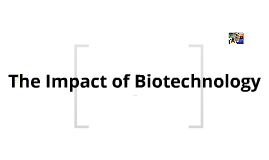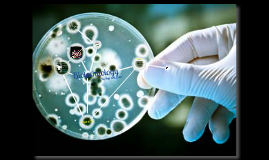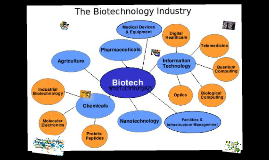Biotechnology PowerPoint presentation
Transcript: Biotechnology Louis Terrero P:2 qESTION 1 Section 1 1) How does biotechnology impacts individuals, society, and/or the environment? Introduction Answer Biotechnology has an endless amount of positive impacts on people, society, and the environment. For example, it helps protect the crops from pest and the environment that may impact the crop in a negative way. Therefor it helps farm to grow more crops, which means there is more agriculture in society, which provides more food and meals for individuals with lots of proteins. Although biotech has many pros but it still has its downside on society and individuals! For example, creating new allergic reactions, higher prices for farms, and more. Pictures Pictures of biotechnology Define the following and state ways in which each is utilized: Section 2 DNA FINGERPRINT Explanation: • DNA fingerprinting “…is the process of determining an individual’s DNA characteristics. In lines of, "DNA profiling". Don’t let the name DNA fingerprinting narrow you mind. DNA fingerprinting doesn’t just have to do with the fingerprint but really any sample that holds DNA. For example, hair, blood or tissue of an organism, saliva, fingerprints, and so much more. This is mainly use in criminal investigations, prison, zoology, agriculture, some technology, etc. u recombinant DNA Explanation: • Recombinant DNA, “Recombinant DNA molecules are DNA molecules formed by laboratory methods of genetic recombination that bring together genetic material from multiple sources, creating sequences that would not otherwise be found in the genome.” stated by, “Recombinant DNA”. Recombinant DNA is utilized in three ways. According to, “What is biotechnology?” It reads, “Recombinant DNA technology has also proven important to the production of vaccines and protein therapies such as human insulin, interferon and human growth hormone. It is also used to produce clotting factors for treating haemophilia and in the development of gene therapy.” In other words, Recombinant DNA is mainly utilized in serums, and in protein treatments. genetic modification Explanation: • Genetic modification is basically genetic manipulation since it modifies the genes of an organism to change their characteristics by using biotechnology. According to, table one in “Genetically Modified Organisms (GMOs): Transgenic Crops and Recombinant DNA Technology” shows that corn, soybean, canola , and plums are some example of approved genetic modification commercial products. Gene Therapy Explanation: • Gene therapy is a trial method that uses genes to cure or prevent disease. By replacing a nonfunctional DNA mutated with a functional gene and using viral vectors to distribute them to the cells. Some examples on the way gene therapy are exploited are, “cystic fibrosis, adenosine deaminase deficiency, familial hypercholesterolemia, cancer, and severe combined immunodeficiency (SCID0 syndrome.” Stated by Britannica. What is the difference, if any, between genetic engineering and genetic modification? Section 3 What are some of the risk and benefits associated with the widespread use of genetic engineering in agriculture? GEnetic Modification Response: Genetic engineering is one type of genetic modification that involves the intentional introduction of a targeted change in a plant, animal, or microbial gene sequence to achieve a specific result. Examples of successful Genetic engineering Mouse-ear cress. Purple tomatoes. Western corn rootworm, European corn borer. Onions that do not make you cry. Golden rice. Bananas. Genetic Engineering Response: Genetic modification refers to a range of methods (such as selection, hybridization, and induced mutation) used to alter the genetic composition of domesticated plants and animals to achieve a desired result. Some examples of these methods: Interspecies crossing, is when food plants carry genes that originate in different species, moved both by nature and by human interference. Mutation Breeding: Induced Chemical and X-ray Mutagenesis, is the method of exposing seeds to chemicals or radiation in order to produce mutations with desirable traits to be bred with other cultivars. Simple Selection, a genetically heterogeneous population of plants is inspected plants with the most desired traits, such as improved tastiness and yield—are selected for continued propagation. The others are eaten or discarded. Response: There are many concerning problems about genetic engineering in agriculture. It can create unwanted traits to the food supply, cause allergic and toxic reactions, Unintentional transfer of genes from one GM plat or animal to another plant or animal not planned for genetic modifications and more. risks! risks! benefits! Response: Some of the benefits of GE would include, more nutritious food, adapting the crops to different environments, an increase in the food supply with less coast and longer lasting, and so much more. Overall, there are more risk than benefits to GE in agriculture. What

















